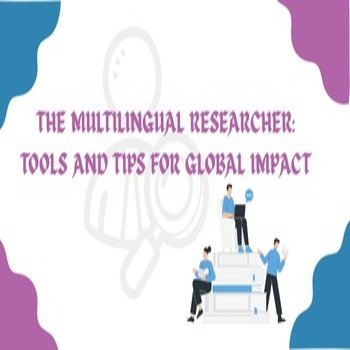What is Multilingual Research?
Multilingual research is the practice of conducting, writing, and sharing academic work across multiple languages. In today’s interconnected world, it enables researchers to collaborate internationally, access broader knowledge bases, and ensure that scientific contributions are not confined by language barriers. By embracing multilingual practices, scholars can maximize the global reach and influence of their work.
Why is Multilingual Research Important?
- Global Collaboration: Breaks down language walls, allowing seamless cooperation across regions and disciplines.
- Access to Broader Knowledge: Unlocks non-English publications and region-specific research often overlooked in global studies.
- Inclusive Knowledge Sharing: Ensures findings are disseminated to wider communities, beyond English-speaking audiences.
- Stronger Academic Impact: Expands readership, improves citation chances, and enhances scholarly visibility worldwide.
Essential Tools for the Multilingual Researcher
1) DeepL Translator
DeepL offers advanced translation quality with contextual precision, making it ideal for translating academic abstracts, manuscripts, or references without altering meaning.
Website: https://www.deepl.com
Fees: Free version available; Pro plans start at $8.74month
2) ChatGPT
ChatGPT assists multilingual researchers by refining drafts, improving grammar, and even generating translated content in an academic tone, streamlining the writing process.
Website: https://chat.openai.com
Fees: Free version; ChatGPT Plus at $20/month.
3) Papago
Papago, developed by Naver, specializes in translating Asian and European languages, supporting researchers working with diverse regional texts and multilingual resources.
Website: https://papago.naver.com
Fees: Free.
4) Mendeley
Mendeley simplifies reference management and supports multilingual citations, allowing researchers to store, organize, and format bibliographies for global journals.
Website: https://www.mendeley.com
Fees: Free.
5) QuillBot
QuillBot helps paraphrase and refine translated text, ensuring that research writing maintains clarity, originality, and academic flow across languages.
Website: https://quillbot.com
Fees: Free basic version; Premium plans start at $9.95 USD / month
6) Overleaf
Overleaf is a cloud-based LaTeX editor that supports multilingual academic writing, real-time collaboration, and seamless formatting for journal-ready research papers.
Website: https://www.overleaf.com
Fees: Free basic plan; Paid plans start at ₹499/month.
Tips for Multilingual Researchers
- Translate for Visibility: Translating abstracts, keywords, and summaries into multiple languages significantly expands your audience and boosts citation potential.
- Collaborate Across Borders: Engaging with multilingual teams makes co-authoring smoother, enhances cultural inclusivity, and increases chances of global partnerships.
- Engage Local Communities: Presenting findings, consent forms, or outreach materials in local languages builds trust and ensures your work influences real-world practice.
- Standardize Key Terms: Maintaining a multilingual glossary prevents misinterpretation, strengthens terminology consistency, and improves study reproducibility.
- Leverage Funding Opportunities: Demonstrating multilingual capacity aligns with many grant requirements and strengthens your professional profile for global research roles.
- Extend Teaching and Mentoring Reach: Providing multilingual learning resources supports students from diverse backgrounds, amplifying your academic influence worldwide.


